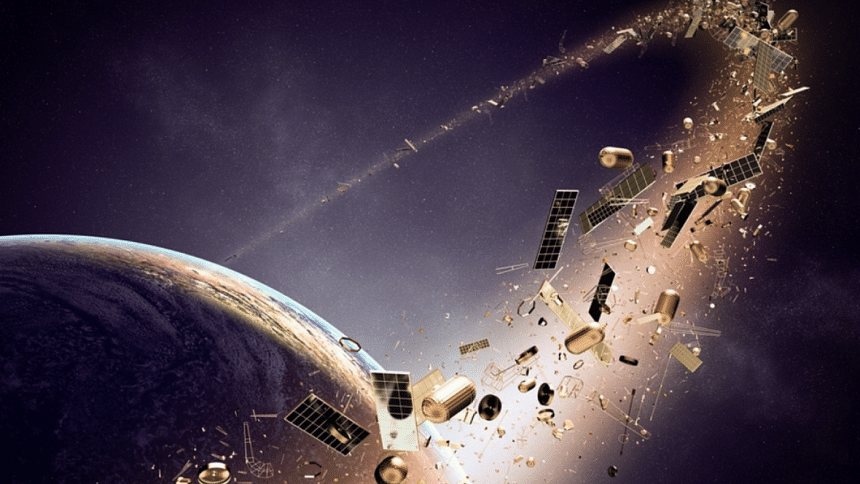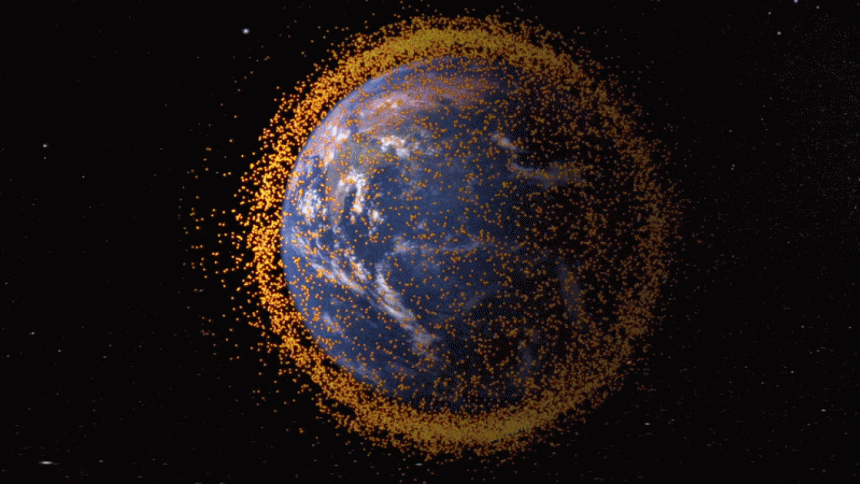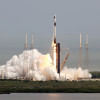Does Outer Space Need to Get Marie Kondo’d?

On May 12, 2021, a puncture was discovered on the robotic arm of the International Space Station (ISS) caused by space debris whirling around in Space. Specialists mark the incident as a "lucky strike" since it didn't cause any grave damage to the station itself or the people inside them. We might have been lucky this time, but there's no guarantee we'll continue being fortunate in the future. With each new nation entering the space age, the issue of space junk is getting more pressing than ever before.
Space junk can be both manmade or natural. Mainly, remnants of burnt-out satellites are identified as space junks. Since there's no gravity or air resistance in space, the junk travels at a colossal speed and can cause severe damage upon coming in contact with other satellites. Not only that, the debris can collide with themselves and create fragments of themselves that can collide again, initiating a chain reaction known as the Kessler Syndrome. This phenomenon implies that even without launching new satellites, the remaining junk alone can cover the earth's lower orbit, leaving no room for functioning satellites to orbit.
The issue of space debris has always worried activists, and now the general population has started to see it too. Space debris has caused billions of dollars worth of damages since the '90s. With the growing number of private space agencies and developed nations' attempts at creating their own space stations, the threat to the space environment has become very tangible and impossible to ignore.
In 2020 alone, ISS manoeuvred three times to avoid debris. By the end of April 2021, 850 satellites were launched into space which is 66.25 percent of that of 2020, a year that saw the launch of the highest number of satellites in human history. It's shuddering to imagine the post-scenario of these machines shutting down and adding a ginormous pile to the number of inactive satellites which currently sits at 3000.

The process of decluttering space junks has already begun, but only to a limited extent. The European Space Agency (ESA) is establishing a mission to clean up their junk in space. Astroscale's ELSA-d will clean debris via magnets. China launched the NEO-1 to catch debris by nets. Japan hopes to create wooden satellites by 2023 that will burn up in the atmosphere after shutting down, producing no debris at all.
However, these initiatives aren't enough to regulate the issue and provide a permanent solution. Currently, there's no law concerning the mandatory disposal of space junk. Furthermore, international laws create hindrance to commercial debris-removal activities. Until the legal issues are sorted out through international cooperation, debris removal will stay confined to a limited area and will be of very little help to exterminate the risk we are to face.
Humankind has always gone forward, not backwards. Thus, we can't shut down satellite launching programs nor demotivate private space agencies to stop their work. When we're at the edge of initiating intergalactic travel, the issue of space debris stands by, tugging away at our attention. A balance between space explorations and debris mitigation must be created to attain a sustainable future. Therefore, humanity needs to put aside their own interests and look towards the greater good to preserve the environment they seek to better understand.
Sabiba Hossain is a Hufflepuff who plans on going into hibernation every winter but never succeeds. Send her fantasy book recommendations at: fb.com/Sabibastro

 For all latest news, follow The Daily Star's Google News channel.
For all latest news, follow The Daily Star's Google News channel. 








Comments